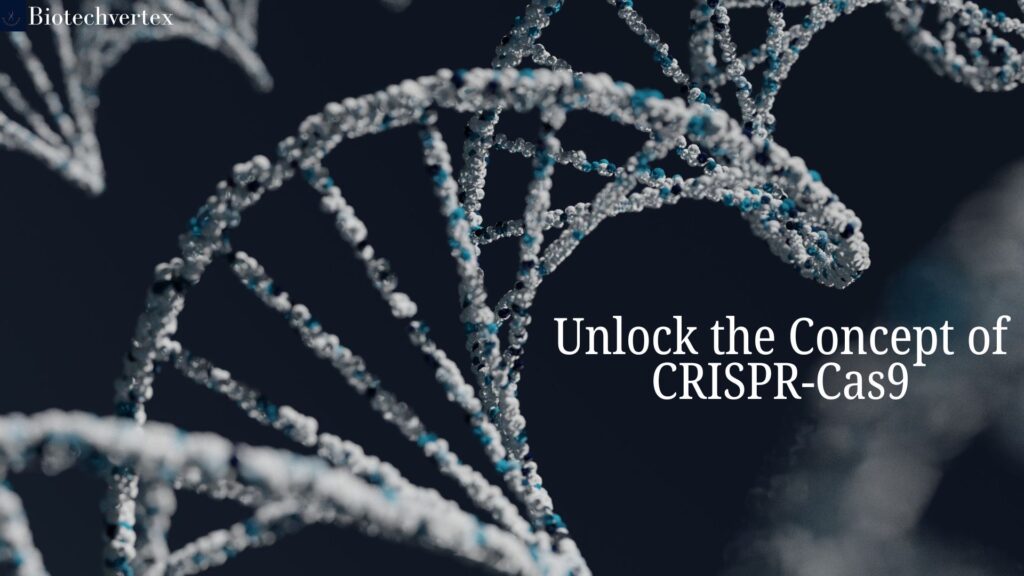CRISPR-CAS9 is a powerful genome editing technology that provides techniques and tools to modify a particular DNA sequence. This system is composed of two parts: CRISPR, which stands for Clustered Regularly Interspaced Short Palindromic Repeats, and CAS9 (CRISPR-associated) proteins. It is a part of the adaptive immunity of prokaryotes. This system allows them to recognize and damage the foreign viral DNA. It also helps to differentiate between foreign DNA and “self” DNA.
What is in its past?
It was first discovered as an unusual repetitive sequence of bacteria in 1987 at Osaka University, Japan. In 2005, CAS9 was discovered. Later, in 2012, it became a breakthrough discovery with an associated connection with CAS9. It was described in the published research by Jennifer Doudna, Emmanuelle Charpentier, and others.
Doudna and Charpentier also got a Nobel Prize in 2020 for their advanced research.
Introducing CRISPR !
CRISPR belongs to a DNA sequence family that is found in prokaryotic organisms such as bacteria and archaea. It is a part of adaptive immunity in prokaryotes (Archaea and bacteria). It is the highly diverse immune system of Archaea (<90%) and bacteria (<40%) that protects them from invasive plasmids and viral DNA (bacteriophages).
A bacteria can contain more than one CRISPR loci which is highly variable even in the same bacterial strains. CRISPR consists of short repetitive sequences known as spacer sequences. The number of their base pairs varies from 23 to 47 bp and 21 to 72 bp. These spacer sequences make CRISPR hypervariable and diverse.
CRISPR also contains a conserved sequence, which is known as the leader sequence. It is located towards the direction of transcription. Its working depends on the CAS9 association.
What is CAS9?
CAS9 stands for CRISPR-associated protein 9. It was previously known as CSN1, CAS5, or CSX12. It is a 160-kilodalton functioning protein that codes for different multi-functional enzymes. It can perform various functions, such as helicases, nucleases, and polymerases. Cas9 is a programmable endonuclease that allows the cutting of DNA virtually in any organism. It plays an important role in generating the defense mechanisms of bacteria against viruses.
Working mechanism of CRISPR within bacteria

The mechanism of working of CRISPR is quite similar to the human immune system. When a virus attacks us, our immune system secretes antibodies in response. And when it attacks again, they quickly recognize and kill the virus particles.
The same goes with CRISPR. His whole mechanism is divided into three phases:
Adaptive phase: These spacer sequences are unique sequences that act as “recognizing elements” and recognize the invaded plasmid or viral DNA within bacteria. Then, it inserts a section of viral DNA between two palindromic sequences into its own genome. That establishes a memory for the bacteria. It is known as “CRISPR array.“
Expression phase: From that new DNA sequence, the CRISPR array transcribes into a new RNA known as “pre-crRNA.” Pre-crRNA is the primary transcript of the CRISPR locus. It further processes into mature crRNAs. Each contains a spacer sequence that is complementary to the target DNA.
This RNA helps to find viral DNA. So when the virus attacks next time, this RNA recognizes the viral DNA complex counterpart, which is known as PAM (Protospacer Adjacent Motifs).
Interference phase: Then protein CAS9 gets involved. crRNAs guide CAS9 protein or a similar enzyme (for example, Cpf1) to target and disable it. Then, it binds to the invaded RNA or DNA with opposite base pairs {Rule of complementarity (i.e., A binds to T and C binds to G)} and eliminates it.
Classification of the CRISPR-CAS
The association of the CRISPR and many CAS proteins leads to activation of the CRISPR-CAS9 system. It is currently grouped into two classes, six types, and 30 subtypes.
- Type I Class: This class involves multisubunit CAS9 proteins that include Cas3, cCas5-8 cas10, and cCas11
- Type II classes: This class involves single sub-subunit proteins, including Cas9, Cas12, or Cas13.
These two classes are divided into six types:
- Class I: Type I, III, IV
- Class II: Type II (Cas9), type V (Cas12), Type VI (Cas13)
The following is the list of the functions of these types:
- Types I, III, and V are responsible for recognizing and cleaving DNA.
- Type VI is used to edit RNA.
- Type III can edit both RNA and DNA.
Type I System: They are the most widespread and frequently used system, which targets the viral DNA. The system is composed of a unique folder of CASCAD (CRISPR-associated complex for antiviral defense). It contains crRNA and Cas proteins-Cas (6, 5, 7, 8, 11). This complex helps in the recognition and cleavage of the invader.
Type II System: (Also type V and VI) It is composed of the Cas9 protein, transcrRNA, and crRNA. The function of this system is PAM-dependent. They include three subtypes-II-A, II-B, and III-C.
Genome editing through CRISPR-CAS9
This is hypothetically proven that it could be a defense mechanism of the bacteria against viral infection. This method in genome editing uses a basic RNA-guided road to edit it. This genome editing technique takes control of the DNA repair system. When crRNA (guide RNA) guides CAS9 protein to the target DNA. Guide RNA recognizes and binds to DNA sequences. Once bonded, CAS9 cleaves both DNA strands.
Once the DNA is cut, researchers use the cell’s DNA repair machinery to add or delete base pairs of the DNA by replacing a pre-existing segment with a modified known DNA sequence. This breakage is repaired by DNA repair mechanisms, which are non-homologous end-joining and homologous-directed repair.
Conclusion:
Today, genome editing has become a frequent topic to discuss. It not only allows scientists to edit DNA but also helps in the treatment of diseases, improving agriculture, and advancing biotechnology. The CRISPR-CAS9 technique has been proven as an ultimate option to edit genomes. Its ability to precisely and efficiently cut DNA makes it a powerful tool in research, drug discovery, gene therapy, and therapeutics.
Some terms to remember:
tracrRNA:
In CRISPR systems, a trans-activating CRISPR RNA (tracrRNA) helps in the maturation of pre-crRNA to matured crRNA.
Guide RNA:
It is a synthetic combination of the crRNA (which contains the target sequence for the DNA) and the tracrRNA (which facilitates the binding of Cas9 to the crRNA).



